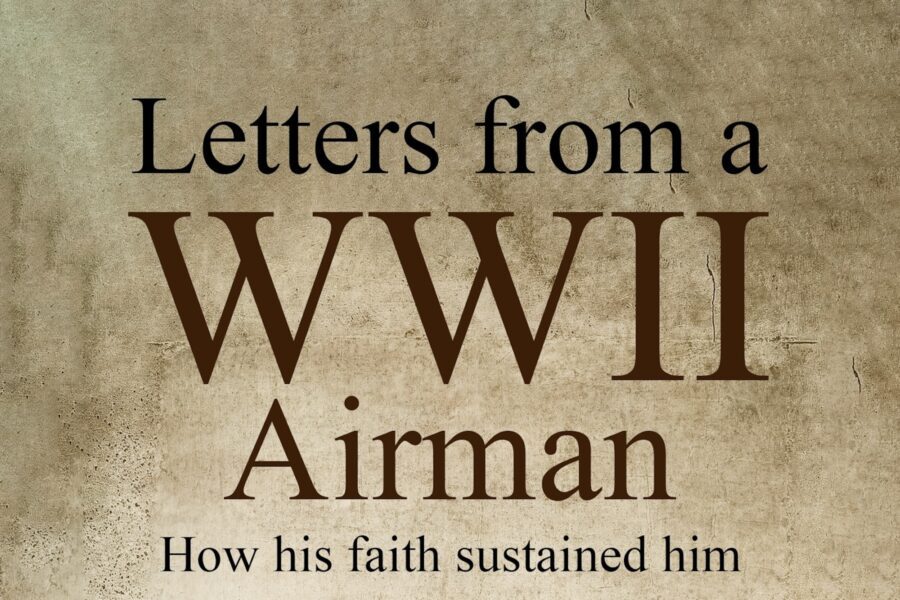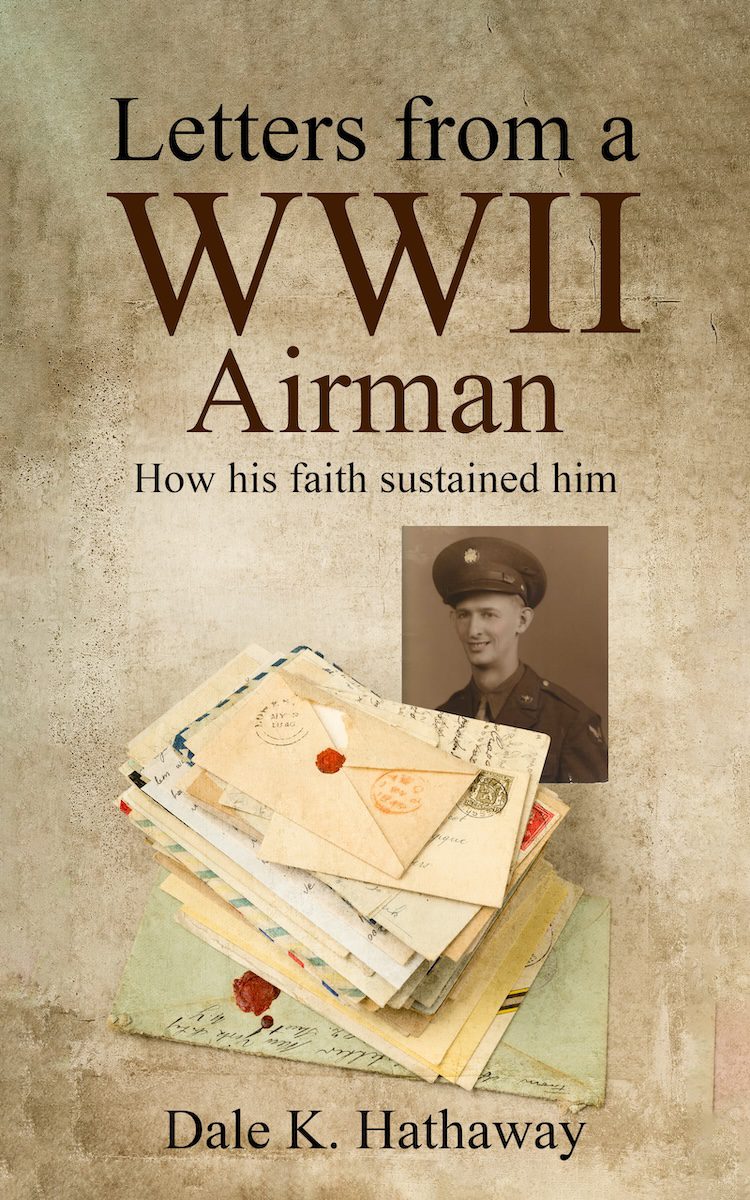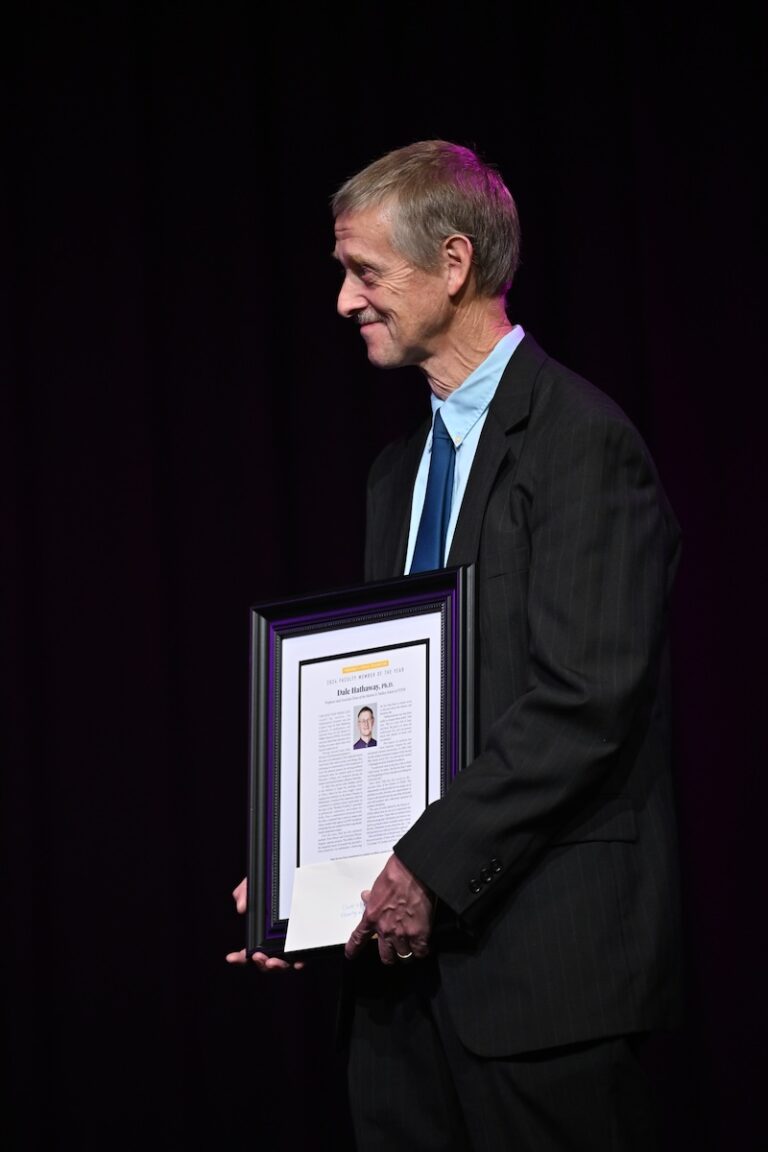
Dr. Dale Hathaway, math professor and associate dean of Olivet’s Martin D. Walker School of STEM, knew his father, Tech. Sgt. Ken Hathaway, had stories of his time as a radio operator on a B-24 Liberator bomber in World War II, but he didn’t know details.
“My father left me a suitcase full of documents from his time in the service,” Dr. Hathaway recounts, “but he never talked much about the experience itself.”
 It was only when his father’s younger brother gave Dr. Hathaway a shoebox full of their wartime correspondence that the Olivet professor began putting together the narrative of his father’s service. Those nearly 80 letters spanning his father’s time in the Air Force and the accompanying research have become the basis of Dr. Hathaway’s latest book, Letters from a WWII Airman: How His Faith Sustained Him, published in January.
It was only when his father’s younger brother gave Dr. Hathaway a shoebox full of their wartime correspondence that the Olivet professor began putting together the narrative of his father’s service. Those nearly 80 letters spanning his father’s time in the Air Force and the accompanying research have become the basis of Dr. Hathaway’s latest book, Letters from a WWII Airman: How His Faith Sustained Him, published in January.
The project began for Dr. Hathaway during the COVID-19 lockdown, when he read through the letters.
“My father’s voice really came through in them,” Dr. Hathaway says, “especially his faith.”
Tech. Sgt. Hathaway, who died in 2001, was a lifetime member of the Church of the Nazarene.
“It was amazing to see how his connections with the denomination and the international church were at play throughout his time in the service,” Dr. Hathaway says. 
In addition to insights into his training, travels and combat, the letters show the centrality of Tech. Sgt. Hathaway’s faith to his military service.
“He would often save or trade in Saturday weekend passes for Sunday passes so he could go to church,” Dr. Hathaway explains. “He always tried to find a local Nazarene church, even when he was stationed overseas.”
These Nazarene connections became part of Tech. Sgt. Hathaway’s international correspondence network. Central to this was the role of the Herald of Holiness, the Nazarene denomination’s publication (now Holiness Today). Tech. Sgt. Hathaway published a letter in the magazine about his experiences with Nazarene congregations in his travels, and when he was shot down on his final mission and became an internee in Switzerland, the Herald of Holiness became a means of letting correspondents throughout America and Europe know he was still alive.
The letters also show how Tech. Sgt. Hathaway and his family got around military censors to communicate: “He had a sort of code with his family back home,” Dr. Hathaway says. Tech. Sgt. Hathaway had an Aunt Bertha from Germany, so when he wanted to communicate that he had been part of a bombing run over Germany, he would write that he had received a letter from his aunt.
The book covers Tech Sgt. Hathaway’s journey from the moment he is drafted to his travels across the U.S. for training, his combat experience in the European theater and his final harrowing mission.
As Dr. Steve Lowe ’88, history professor and vice president for academic affairs, summarizes, “Historians will appreciate the firsthand accounts of flight training and battle in a B-24 bomber; Christian believers will learn about how their forefathers in small churches across America cared for one another in a time of national crisis; and all readers will find themselves caught up in the twists and turns of Ken and Katy’s long-distance wartime romance.”
Dr. Hathaway, who has authored mathematics textbooks and a book of mathematics-themed devotionals, sees this latest work as a testament to his father’s faith and a window into a war that shaped a generation. The book is now available for purchase through Kharis Publishing as well as Amazon and Barnes & Noble.





